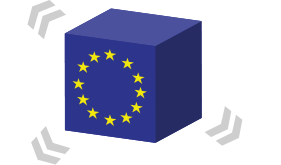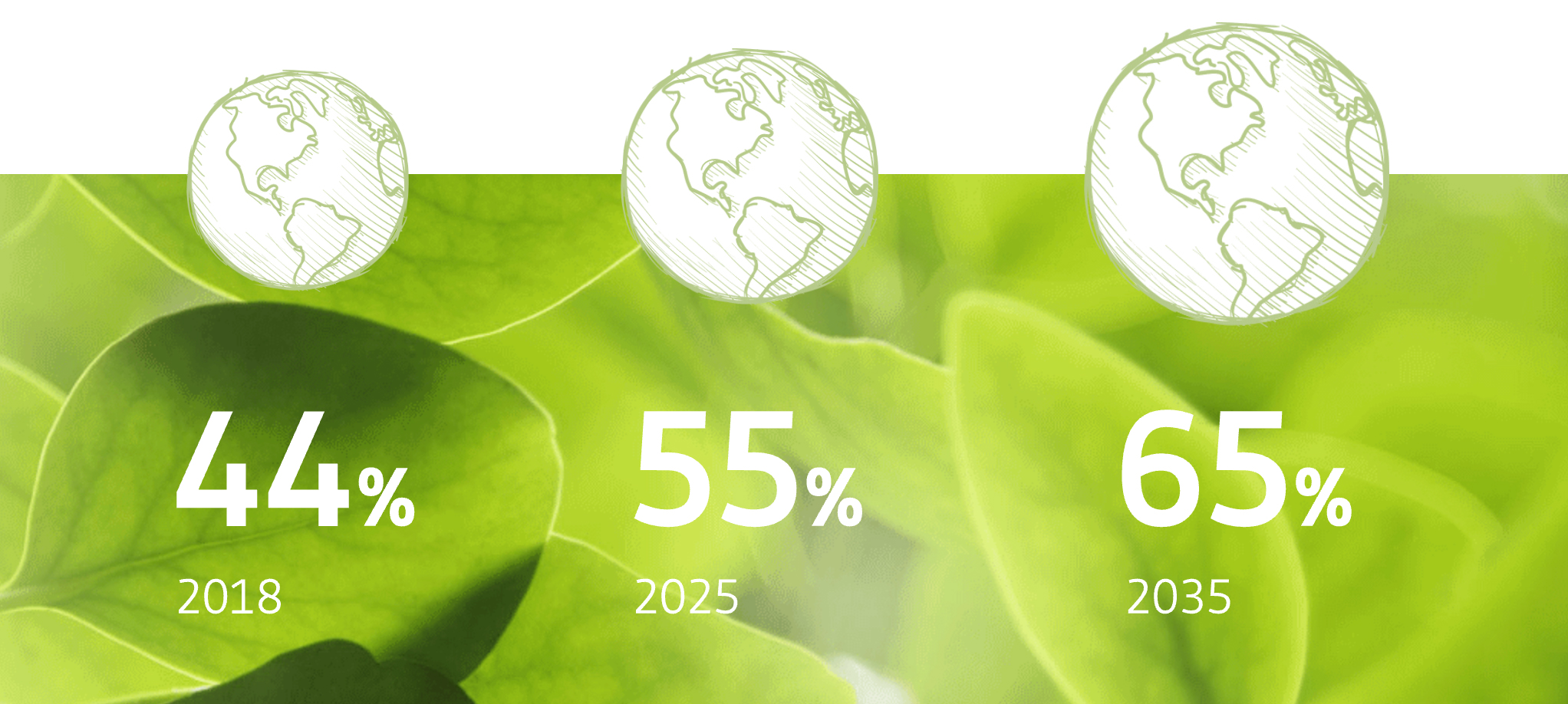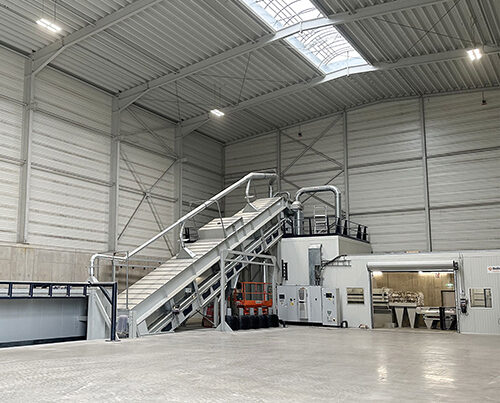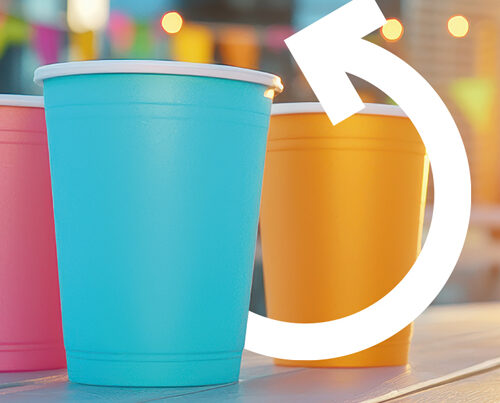New targets for a number of waste types
The European Circular Economy Package (CEP) has been formally approved following the vote held in the EU Parliament on 18 April. This was the culmination of three years of discussions held between the Commission, Parliament and Council on how best to increase recycling rates or – even better – reduce volumes of waste in order to protect the environment, curb climate change and conserve natural resources. New rules have been drawn up for a number of waste types which member states can now not only read in black and white but must also follow. The first step towards creating a uniform, future-oriented European circular economy has been made. It is now up to the individual countries to play their role.

The goal: higher recycling rates
The EU has set ambitious goals with its new directives for municipal and packaging waste, organic waste and textiles, landfill and food waste. The higher recycling rates apply to all member states: today’s municipal waste recycling rate of 44% must have increased to at least 55% by 2025 and to at least 65% by 2035. 65% of all packaging should be recycled by 2025 and 70% by 2030. Specific targets have also been set out for paper and cardboard, plastics, wood, glass and metal. What’s more, the package includes a uniform, input-oriented method for calculating recycling rates. According to this system, Germany’s current recycling rate of 67% – the highest in Europe – would be considerably lower. Obligatory targets are also in place for organic waste and textiles: both these waste types must be collected separately across all EU states by 2024. This is nothing new for Germany but a major step for many of the other European countries. The amount of food being wasted should also have been reduced by 25% by 2030.

How recycling rates should have increased by 2035
Moving away from landfill
This is not all. New regulations have been drawn up for landfills. These will have a major impact on countries in the south of Europe, such as Croatia and Greece or Malta and Cyprus, where landfills still take more than three quarters of all household waste. To change this habit, the EU has decreed that a maximum ten percent of a country’s household waste may be sent to landfill from 2035 onwards. The EU believes that the combination of these measures will help close product life cycles (from design, production and consumption, to collection and recycling) and, at the same time, pave the way for a more sustainable and cost-effective recycling industry. While the CEP brings hope for the future, politicians will have to take steps to ensure it is enforced if it is to be a success both at national and international level. The EU has come up with some ideas for this as well: member states that have not achieved the obligatory recycling rates within the stipulated period must inform the Commission of this and explain why. At least, that is the theory. Only time will tell how the system will work in practice.
Plastic is an important issue
One part of the CEP, the EU’s Plastics Strategy, is turning out to be of particular importance – not least because of China’s recent ban on imports. The primary goal here is to only allow plastic packaging to be used in the EU if it can be efficiently recycled, a move they hope will also help combat marine pollution. And all this should have been reached by 2030. A package of measures has been put together in Brussels to bring this about: plastic products should be more recyclable, recycling capacities should be increased and more efforts should be made to collect plastic waste separately and to grow the market for recycled plastics.

Use of recycled plastic: room for improvement
Voluntary schemes should be in place across the EU to encourage manufacturers to use this recycled material. As a result, the EU is looking for the volumes of recycled plastics used in new products to have increased to ten million tonnes by 2025. This is a truly ambitious goal looking at the situation today. Germany leads the way at the moment when it comes to using recycled raw materials in new products but this is a mere 14 percent of all raw materials used in manufacturing. There is certainly much room for improvement. REMONDIS has been calling for a three-pronged initiative to create a system of incentives to encourage manufacturers to use recycled raw materials and for more money to be invested in improving the quality of materials produced by sorting and recycling technology.
Chemical recycling
And REMONDIS is leading by example here: its new sorting facility for household packaging waste and its new facility for recycling polystyrene at its Lippe Plant in Lünen are just two examples of many. This family-run business is constantly carrying out research and development work to find new and better recycling processes – in particular into ways of converting plastic waste into its original source material. One solution here is so-called chemical recycling. Depolymerisation is used here to break up plastics into polymers, monomers or high quality fuels creating pure, top quality and reusable raw materials.
Higher recycling rates, better sorting processes and a bigger market for recycled raw materials. These are the main aims of the EU’s Circular Economy Package.
A ban on ten single-use plastic products
By introducing the Circular Economy Package, politicians have at least made the first step towards meeting the demands of those around them. In May, the EU Commission then announced that it was planning to ban ten different kinds of single-use plastic products across the EU. This seemingly random choice of products include single-use cutlery, plastic straws, cotton buds and sticks for balloons. These are the products that tend to end up on our beaches and in our seas and producers will be called on to contribute towards the clean-up costs. REMONDIS supports the efforts being made by the German government and the EU to reduce the volumes of plastic being used around the world but calls on them to step up their measures and do more than just these symbolic gestures.

Redefine the Ecodesign Directive

Increase investments in better sorting & recycling technology and in research & development

Create an incentive system for industrial businesses
A global task
A comprehensive strategy to achieve more and better recycling must include moves to expand the structures that are already in place – including those far beyond the EU’s borders. All countries need a well-functioning recycling infrastructure, in particular those in Asia, if the plastic pollution in our seas and oceans is to be reduced and they are to have a future-oriented circular economy. For humans, for the environment, for our seas, for our climate and, last but not least, for the economy itself.

Image credits: image 1: Fotolia: dispicture; image 2: Fotolia: sebra; image 3: Fotolia: KariDesign; image 4: AdobeStock: BillionPhotos.com; image 5: Fotolia: Friedberg












